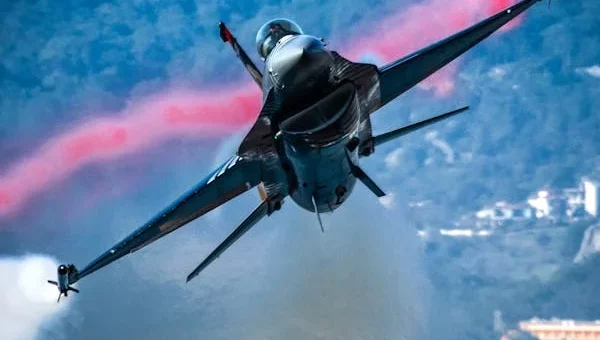
Introduction: The Evolution of Fighter Jet Generations
In modern aerial warfare, the classification of fighter aircraft into generations serves as a framework for understanding technological progress. Among these, 4th and 5th generation fighter jets represent major leaps in performance, stealth, and mission versatility. Understanding how these two generations differ is crucial to comprehending the evolution of air combat capabilities in the 21st century.
The transition from 4th to 5th generation fighters isn’t just about better speed or range; it’s about revolutionary shifts in design philosophy. Key technologies such as stealth, sensor fusion, and network-centric warfare define 5th generation fighters and distinguish them from their 4th generation predecessors. This article provides an in-depth comparison between these two pivotal aircraft categories.
1. Defining Generational Characteristics
1.1 4th Generation Fighters Overview
4th generation fighter jets emerged in the 1970s and 1980s, marking a significant advancement in agility, radar systems, and weapons technology. These aircraft often feature fly-by-wire systems, advanced pulse-Doppler radar, and improved aerodynamics for dogfighting supremacy.
Examples of 4th Generation Fighters:
- F-16 Fighting Falcon (USA)
- Su-27 Flanker (Russia)
- Mirage 2000 (France)
- Eurofighter Typhoon (early versions)
Key Characteristics:
- Improved maneuverability
- Enhanced beyond-visual-range (BVR) combat
- Multi-role capability
1.2 5th Generation Fighters Defined
The first true 5th generation fighter jet is the F-22 Raptor, introduced by the U.S. Air Force in the early 2000s. These jets integrate stealth into their design from inception, along with advanced avionics, data fusion, and superior situational awareness.
Examples of 5th Generation Fighters:
- F-22 Raptor (USA)
- F-35 Lightning II (USA)
- Chengdu J-20 (China)
- Sukhoi Su-57 (Russia)
Key Characteristics:
- Stealth by design
- Sensor fusion and network-centric warfare
- Integrated avionics and supercruise
2. Stealth and Survivability
2.1 4th Generation Stealth Add-Ons
Most 4th generation fighters were not designed with stealth as a core feature. Some have been retrofitted with stealth enhancements like radar-absorbent paint or modified engine intakes, but their radar cross-section (RCS) remains relatively high compared to 5th generation jets.
Limitations of 4th Gen Stealth:
- Exposed weapons pylons
- Reflective canopies and surfaces
- Inferior infrared signature suppression
Example: The F/A-18 Super Hornet uses coatings and design tweaks to reduce RCS, but it’s still not fully stealth-capable.
2.2 5th Generation Low Observability
5th generation fighters are designed from the ground up for low observability. Their airframes feature faceted surfaces, internal weapon bays, and exhaust systems designed to minimize infrared and radar signatures.
Advantages of 5th Gen Stealth:
- Internal weapons storage
- Radar-absorbing materials
- Seamless surface coatings and edge alignment
Comparison Table:
| Feature | 4th Generation | 5th Generation |
|---|---|---|
| RCS Reduction | Moderate (Retrofit) | Integral to design |
| Weapons Placement | External Pylons | Internal Bays |
| Infrared Suppression | Limited | Engine masking included |
3. Avionics and Situational Awareness
3.1 Avionics in 4th Gen Jets
4th generation jets rely on a variety of sensors and radar systems, but data from these systems is often fed to pilots separately. This results in higher cognitive load and slower decision-making in high-pressure environments.
Typical Features:
- Pulse-Doppler radar
- Head-up displays (HUD)
- Discrete electronic warfare systems
Challenges:
- Lack of real-time sensor integration
- Minimal automation in threat response
3.2 Sensor Fusion in 5th Gen Jets
5th generation fighters offer full sensor fusion, integrating inputs from radar, infrared search and track (IRST), communications, and satellites into a single, actionable display. This drastically reduces pilot workload and enhances situational awareness.
Advanced Features:
- Helmet-mounted displays (HMD)
- 360-degree sensor coverage
- Real-time data sharing across platforms
Example: The F-35’s DAS (Distributed Aperture System) and EOTS (Electro-Optical Targeting System) give pilots unmatched visibility and tracking ability.
4. Performance and Combat Roles
4.1 Dogfighting and Kinetics
Many 4th generation jets excel in close-range combat due to their high thrust-to-weight ratios and aerodynamic designs. They were developed with dogfighting in mind, using cannon and heat-seeking missiles in visual range.
Strengths:
- High maneuverability
- Proven air-to-air combat success
Limitations:
- Lack of stealth in BVR scenarios
- No data fusion for rapid targeting
4.2 Beyond Visual Range and Multi-role Versatility
5th generation fighters are designed for BVR engagements. They detect and track threats from long distances, engaging enemies before being detected themselves. Their design allows for smooth transition between air-to-air, air-to-ground, and ISR (intelligence, surveillance, reconnaissance) roles.
Capabilities:
- Supercruise in the F-22
- Multi-spectral targeting
- Integrated ECM (Electronic Countermeasures)
Comparison Table:
| Feature | 4th Generation | 5th Generation |
| Combat Focus | Dogfighting/BVR | BVR/Multirole |
| Maneuverability | High | Very High (With stealth) |
| Role Flexibility | Moderate | Extensive |
5. Network-Centric and Software Capabilities
5.1 Legacy Communications in 4th Gen
Fourth-generation fighters generally use point-to-point radio communications and basic datalinks like Link 16. These systems work well within squadrons but have limited multi-platform coordination.
Weaknesses:
- Low data bandwidth
- Minimal automation
- Hard to upgrade software architecture
5.2 Digital Architecture of 5th Gen
5th generation fighters are designed with open-architecture systems that allow rapid software updates. They operate as flying sensors and processors, communicating in real-time with other platforms including satellites, drones, and ground stations.
Network-Centric Strengths:
- Real-time multi-domain integration
- Cybersecurity resilience
- Cloud-based mission data updates
Example: The F-35 continuously evolves through software block upgrades, allowing new weapons, features, and threat responses without needing hardware overhauls.
Conclusion: Why Generational Differences Matter
Understanding the differences between 4th vs. 5th generation fighter jets goes beyond technical curiosity—it defines how air forces plan strategy, allocate budgets, and ensure national defense in the modern age. The leap from radar-guided engagements to data-driven, stealth-based warfare highlights a new chapter in aerial combat.
Key Takeaways:
- 4th gen jets are reliable and cost-effective but lack stealth and full-spectrum warfare capabilities.
- 5th gen fighters offer superior situational awareness, survivability, and versatility across mission types.
- The integration of AI, data fusion, and stealth technologies makes 5th gen jets indispensable in current and future conflicts.